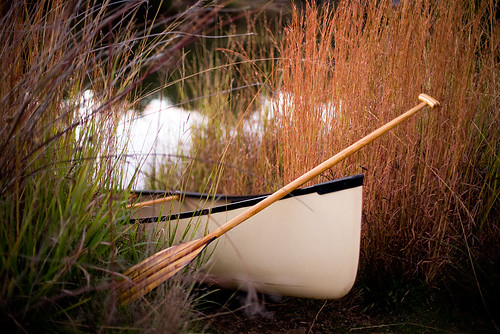
The first paddle I bought was a Bending Branches Arrow, and that was fine for starting out. It was starting to show some wear though (some of the wood grain was splitting on the shaft) and it isn't really cut out for white water paddling, which is what I'm starting to get into. I wanted my next paddle to be really nice (and really durable). It was a tough choice picking a good paddle for white water, that I also wouldn't mind using on the flat waters that I frequent. I pretty much had it narrowed down between a Mitchell Premier, which is what just about everyone I paddle with uses, or a Sawyer Stringray that I ran across on Sawyer's website.
All my friends rave about the Mitchell being the best of the best, but I have to admit I wasn't particularly drawn to the black carbon fiber blade. I love the look of a fine wooden paddle, and I fell in love with the photos of the Stingray on Sawyer's website. It didn't hurt that this paddle was co-designed by Bob Foote and Harold Deal. It also helped that it was about $50 bucks cheaper, and I liked the fact that it was made right here on the west coast just 5 or 6 hours north in Southern Oregon.
At 29 ounces this is no ultralight. Everything about it screams tough though, from it's three piece ash shaft, to it's beefy 8.5 x 21" inch blade, to it's fiberglass coating with a Dynell tip and Sawyer's Tough-Edge. It just feels amazing solid in hand, and I'd feel confident in it's strength in any conditions or grade of moving water.
Paddling in moving water is really this paddles bread and butter. The tag that came with it says that it is ideal for WW Canoes and Paddle Rafts. My first paddle with it was in an all day solo canoe class taught on some class I moving water of the lower American River. I had paddled this stretch quite a few times both tandem and solo, and I was instantly amazed at the progress I could make while ferrying and catching some small standing waves as compared to my old paddle. At one point I was crossing a section of the river with swift current and aimed well above the point in the eddie that I wished to enter. I put some muscle to the paddle and before I knew it I was in the tree over hang well above my ultimate target point (and ducking to avoid low hanging limbs). That big spooned blade moves the boat with so much more authority than my old paddle that I was somewhat shocked.
My next experience with it was on the Coloma to Henningsen Park section of the South Fork of the American River. My first Class II white water experience. That weekend was supposed to be the Red Cross white water tandem class, but it was canceled due to low attendance so the instructors (friends of mine) invited me up to try my hand at it in my solo boat (a Dagger Genesis BTW). What a blast! I got myself into a bit of trouble earlier on and flipped, but after that I had a really fun run all the while enjoying the power that this paddle affords me. The burst of speed that a good spoon faced blade gives is great for punching out of eddies, ferrying strong currents, and catching the next eddie on the other side. I can't wait until next summer to get up there again!
Unfortunately I don't have a case yet that I'm suitably comfortable with taking my nice camera out in white water, so I took some photos on a flat water trip just to illustrate the paddle. I actually enjoy it just as much paddling calm glassy waters as I did in the frothy white stuff. Jennifer could tell the difference right away in the way I can whip our tandem around effortlessly with a few quick sculling strokes. The blade slices through the water very nicely due to it's thin profile (made strong by it's fiberglass coating). It really feels great moving the boat along.
The only problems I have with it on flat water lakes and such is the T-grip, which is great for White Water control, but not as comfortable for long paddles, and the asymmetrical nature of the spooned blade. This has got me already dreaming about the Sawyer Voyager paddle. It's another beauty paddle made by Sawyer that was made for flat water paddling. At 18 ounces and with a standard pear grip it would be amazing touring lakes or for paddling the Indian Stroke which has in-water recovers that require rotating the paddle (this doesn't work so well with spooned blades).
All in all though I'm super happy with my purchase and look forward to using this paddle more on moving water and am content with it on the flat stuff until I get another one of their beautiful paddles. I'm quite impressed with the quality, aesthetics, and functionality of Sawyer paddles!
Here's some photos to illustrate the curve of the blade and the overall look of the paddle. It's a real looker and a useful tool to boot!
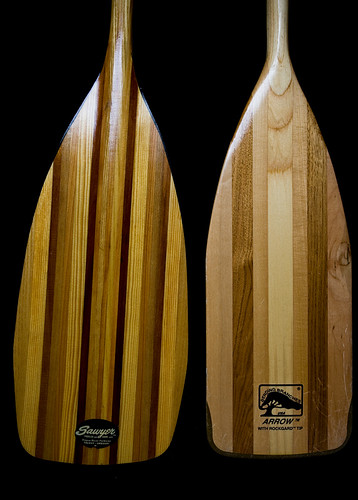
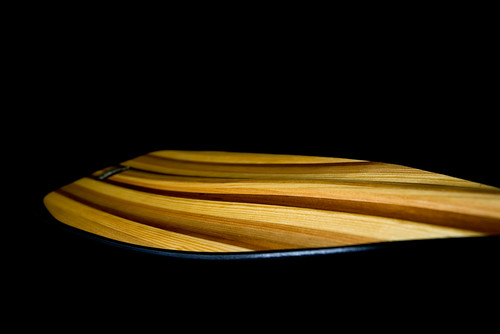
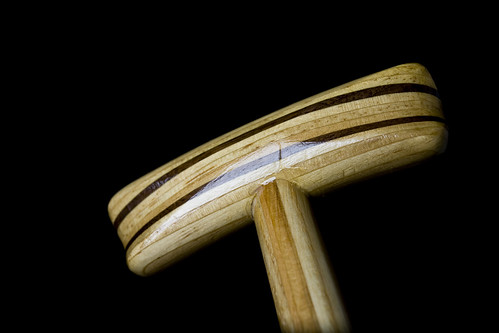
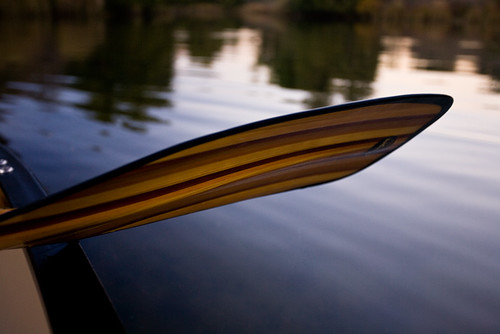
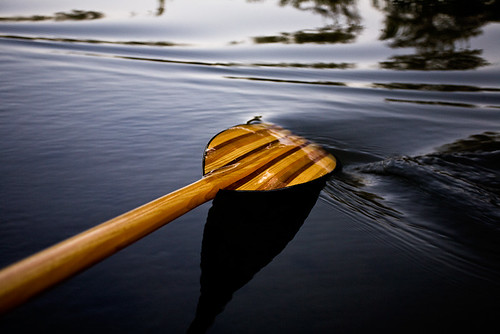

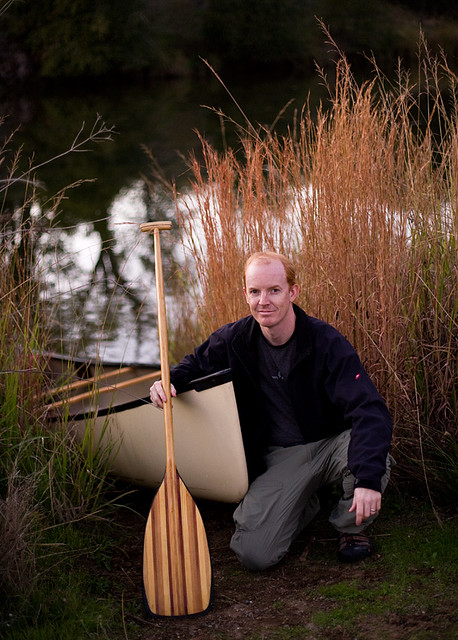
2 comments:
Hello, and thanks for mentioning our Bending Branches brand in your Blog.
As you know, the Bending Branches Arrow is not a whitewater design, so not a comparison with the Stingray you chose. For a better comparison, please check out the Bending Branches Expedition Plus, which is a paddle designed specifically for whitewater use (and abuse). Here's a link: www.bendingbranches.com/expedition-plus-whitewater-and-expedition-wood-canoe-paddle.php
Hang on to that Arrow for recreational paddling though, as it appears to have plenty of life left in it. Adding a layer of fiberglass to the blade may help too.
As with all wood paddles, some off-season maintenance will prolong their life. For a few tips on wood paddle maintenance, please check out www.bendingbranches.com/caring-for-wood-canoe-paddles.html.
Happy Paddling!
Team Bending Branches
I never really intended the post to be a comparison of the Arrow and the Stingray. The Arrow works great as a starting out paddle on flat water and mild moving water, and will serve me just fine as a backup and loaner for friends (though mine did develop some splitting of the grain on the shaft from prying on the gunwale, which I'm sure will sand out...). I only included it in the photo and writeup as a point of reference.
Thanks for stopping by my blog!
Randy
Post a Comment